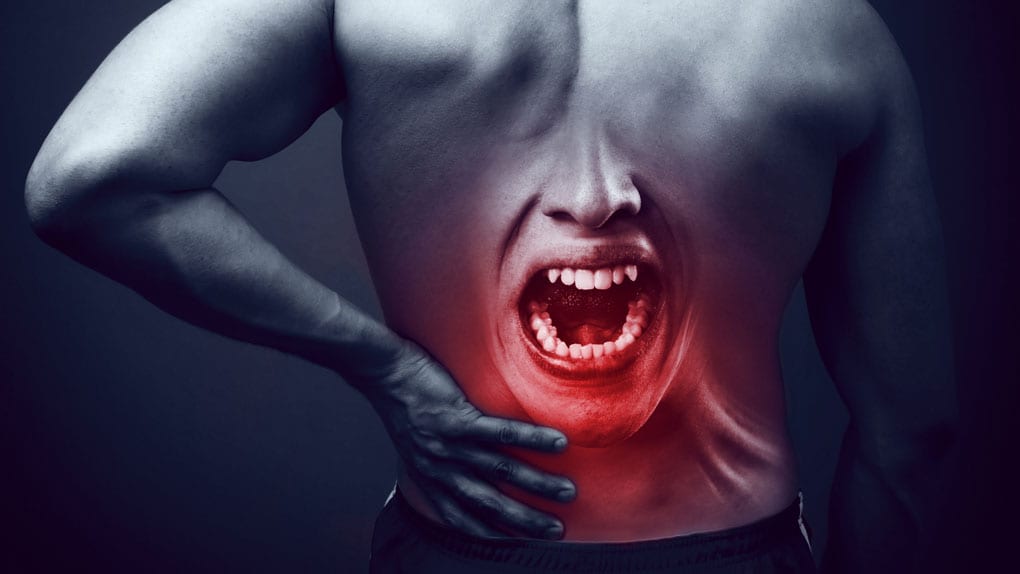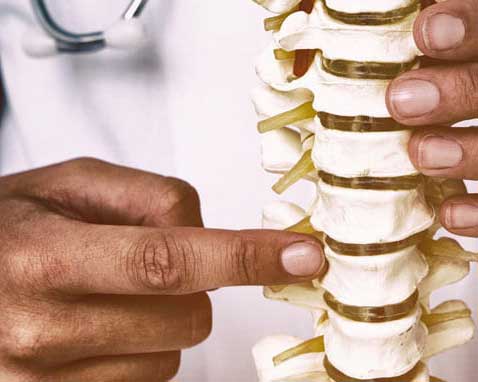When does Pain Become Chronic?
The Nature of Pain
While pain obviously doesn’t feel good, it is actually a necessary function of your nervous system. If you get injured or have an illness, the nerves around the affected area send signals that travel through the spinal cord and up into your brain. Your brain then processes the signals as pain, alerting you to the injury or illness at its source.
Your body’s reaction to the pain – muscle tension, emotional distress, etc. – are all part of your nervous system’s response to the root cause or injury. These reactions help us guard against further injuring ourselves and encourage us to seek help for the pain. This, in a nutshell, is the basic function of pain and your nervous system – a warning system for injury or illness in your body. With most acute pain, the distress in your nervous system returns to normal when the original injury or illness heals.
See a Doctor Today
What is Acute Pain?
The normal progression outlined above – an injury or illness sending pain signals through your nervous system – describes acute pain. If you slip and fall, twist a knee, roll an ankle, or hit your head, you experience acute pain. This pain tells your body to protect itself and seek care.
The primary characteristic of acute pain is its connection with this initial injury or illness. For the most part, the pain ends when the injury heals or illness is resolved. There may be a short period of recovery, but as time progresses, the pain diminishes and you can return to your normal function.
What is Chronic Pain?
With chronic pain cases, pain itself may become the disease. Pain is said to become chronic after three months of continued pain, and in some cases the nervous system stays in a state of reactivity after the initial injury or illness has healed. This state of pain hypersensitivity often causes pain above and beyond the pain of the original condition. This heightened state is called “central sensitization” and is characterized by increasingly widespread and intense pain. The heightened pain signals can radiate to areas peripheral to the original injury, and in some cases to unrelated parts of your body.
The emotional toll of this kind of chronic pain should not be underestimated. Pain and your mood go hand-in-hand, so the stress of chronic pain can lead to a vicious cycle. Prolonged periods of pain can lead to anxiety, irritability, poor sleep, fatigue, and depression. The stress of these psychological problems add to the reactivity of the nervous system, which worsens the pain.
Chronic pain from central sensitization can occur with all pain conditions, including acute spine injuries, whiplash injuries, failed back surgery syndrome, and disorders of the spine. Chronic pain lasts for weeks, months, even years. Generally, it is diagnosed after three to six months of pain.
Related Content:
How Can Back Surgery “Fail” and What Are My Options if it Does?
Up to 40% of surgery patients report ongoing pain, or pain as a result of their back surgery, with each subsequent procedure increasing the chance of ongoing pain. This phenomenon is referred to as “Failed Back Surgery Syndrome.”
Can Chronic Pain be Treated?
Despite the fact that as many as 40% of Americans deal with chronic pain1,2, the condition remains misunderstood and complicated to treat. Chronic pain can take many forms, but treatment depends on which of three major categories it falls into:
- Pain with an identifiable cause, such as an injury or structural spine conditions, including degenerative disc disease, spinal stenosis, and spondylolisthesis;
- Chronic pain with no identifiable cause. When pain persists after the tissue has healed and there is no clear reason for the pain that can be identified, it is often termed “chronic benign pain”;
- Neuropathic pain which shows no signs of the original injury and the pain is unrelated to an observable injury or condition. Certain nerves continue to send pain messages to the brain even though there is no ongoing tissue damage.
Managing Chronic Pain with Conservative Treatments
Some chronic pain responds to conservative therapies, such as physical therapy, NSAID pain relievers, and chiropractic adjustment. These treatments are usually most effective in treating pain with an identifiable cause, as they can help strengthen supporting muscles and correct postural and structural imbalances that cause pain.
Managing Chronic Pain with Medication
Treatment for long-term chronic pain relief sometimes relies heavily upon the use of opioid painkillers. Opioid medications may offer temporary relief from pain with and without an identifiable cause but are usually not effective in relieving neuropathic pain. These medications come with the risk of addiction and may not be effective for lasting pain relief. Patients often develop a tolerance to the medication which in turn requires higher dosages, leading down a potentially dangerous path.
Managing Chronic Pain with Targeted Treatments
Minimally-invasive injections and treatments traditionally focus on helping with rapid and effective pain relief that can let patients resume healthy mobility and promote long-term spine health. These treatments are most effective for pain with an identifiable cause, although can also be applied to pain with no identifiable cause. These treatments include epidural steroid injections, radiofrequency ablations, and facet joint injection.
Managing Chronic Pain with Surgery
Some doctors will recommend surgery for chronic back pain that doesn’t respond to conservative treatments or injections. Surgery is often an invasive option that may include lengthier healing periods, more or less significant pain during recovery, and varying inpatient hospital stays.
Up to 40% of surgery patients report ongoing pain, or pain as a result of their back surgery, with each subsequent procedure increasing the chance of ongoing pain. This phenomenon is referred to as “Failed Back Surgery Syndrome.” The risk of ongoing pain from surgery complications grows with each successive surgery.
Managing Chronic Pain
with Spinal Cord Stimulation
with Spinal Cord Stimulation
Spinal Cord Stimulation (SCS) therapy directs mild electrical pulses that modify or block nerve activity in a non-medicinal way to minimize the sensation of pain reaching the brain. Some patients report that they have gone from discomfort that they had ranked as a 7 or 8 (on a scale of 10) to a much more manageable 3 out of 10. Others have reported that their pain has disappeared completely with use of the stimulator.
Choosing a Doctor to treat Chronic Pain
The best choice for a doctor to help diagnose and treat your chronic pain will involve finding a specialist who takes a multidisciplinary approach to pain treatment. Chronic pain is a complex issue that requires careful examination and understanding of the underlying condition to determine if conservative treatments, physical therapy, minimally-invasive pain interventions, or spinal cord stimulation may offer the best path to living pain free.
Start by seeing if a same-day appointment is available to diagnose your chronic back pain.







